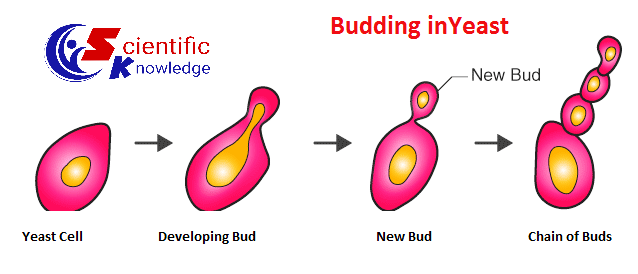Binary Fission in amoeba and Budding in yeast?
Experiment – 03
Aim
To study about (a) Binary Fission in amoeba and (b) Budding in yeast with the help of prepared slides.
Theory
Budding and binary fission are types of asexual reproduction observed in lower organisms such as bacteria, unicellular protozoans and some other entities.
What is binary fission?
In this type of reproduction, the parent cell divides or is split into two daughter cells through mitosis wherein each daughter cell develops into an adult. Amitosis is the division of the nucleus.
Define budding?
It is a kind of asexual reproduction wherein a new organism develops from a bud or an outgrowth due to the process of cell division at a particular site.
Can you give an example of an organism that carries out budding?
A freshwater entity such as hydra.


Material Required
- Compound microscope
- Permanent slides of budding in yeast and binary fission in amoeba
Procedure
- Place the slide under a compound microscope
- Focus the slide, first under low power and later under high power of the compound microscope
- Various stages of budding and binary fission can be carefully examined
Diagram
Observation
(a) Binary fission in Amoeba
- Initially, the pseudopodia are retrieved. The body of amoeba is coiled and becomes round
- Amitosis is observed, the division of the nucleus takes places which are followed by splitting of cytoplasm
- At the point of fission in the body of the amoeba, a constriction starts to develop.
- The constriction or furrow turns deeper resulting in the formation of two daughter cells
(b) Budding in yeast
- Protuberance or a tiny outgrowth is observed on the parent cell
- Division of the nucleus is observed which is later seen in the bud
- Repetitive budding leads to the formation of a chain of cells
Conclusions
The prepared slides display asexual reproduction. One individual is involved to produce a new offspring of its own kind.
Precautions
- Slides need to be aligned and focused accurately
- Sketch out your observation that is observed under a microscope
- The slides first need to be examined under a low-power magnification of the compound microscope and then under high-power magnification.
Binary Fission in amoeba and Budding in yeast?




More Stories
The dependence of potential difference (V) across a resistor on the current (I)